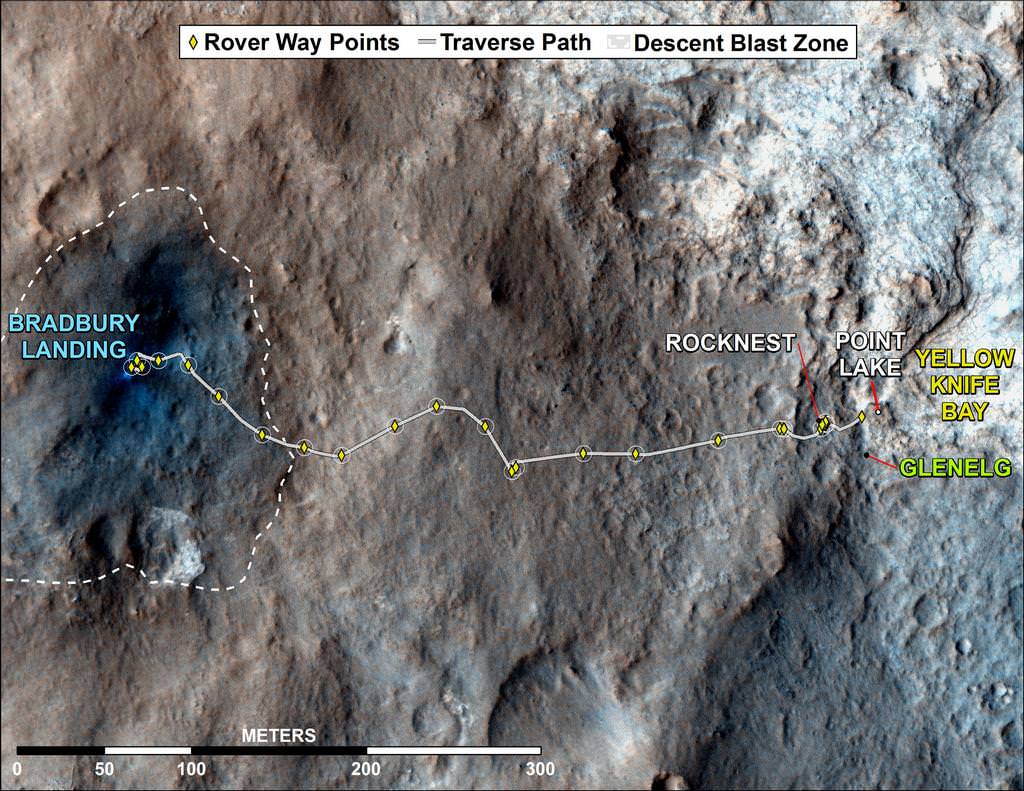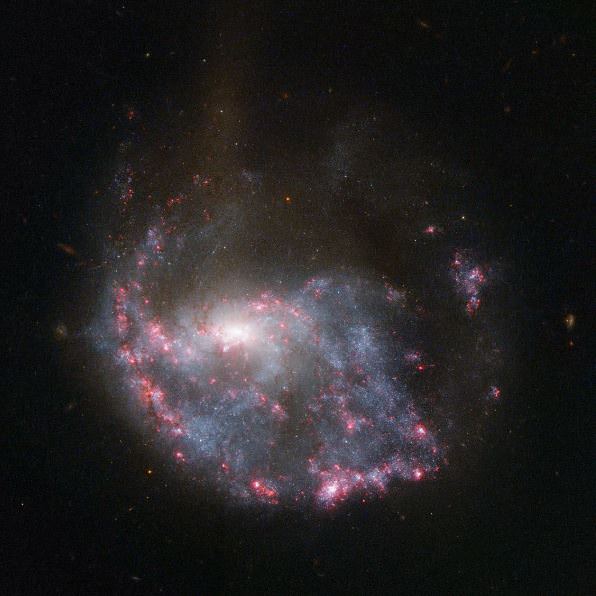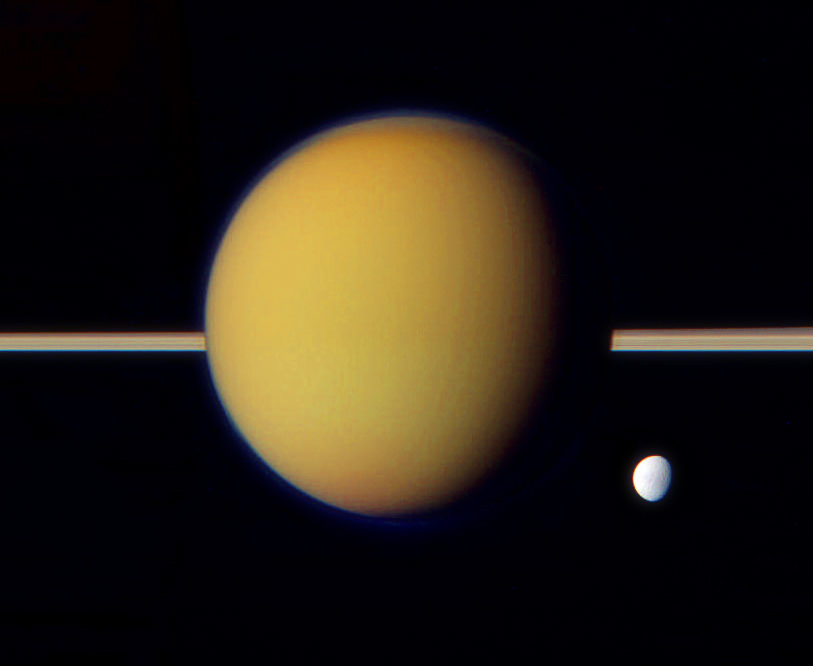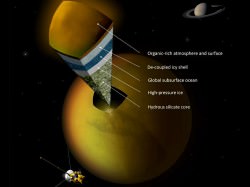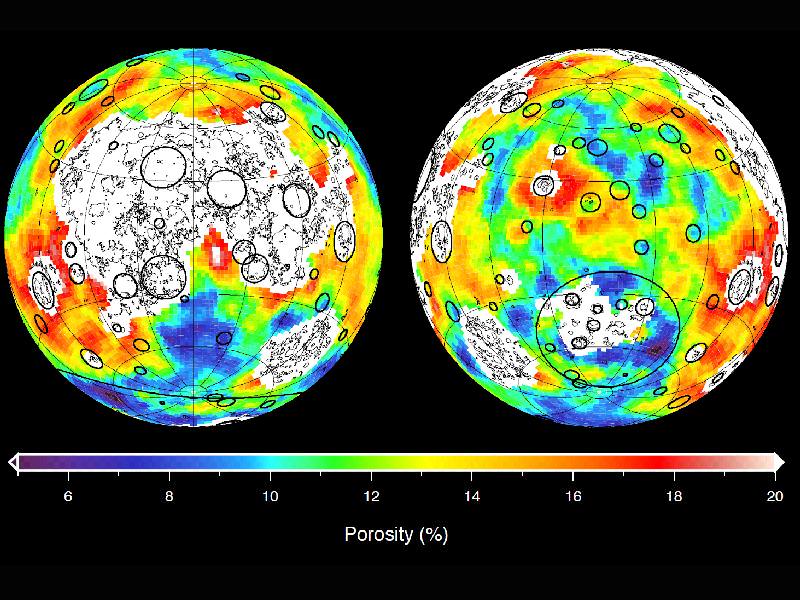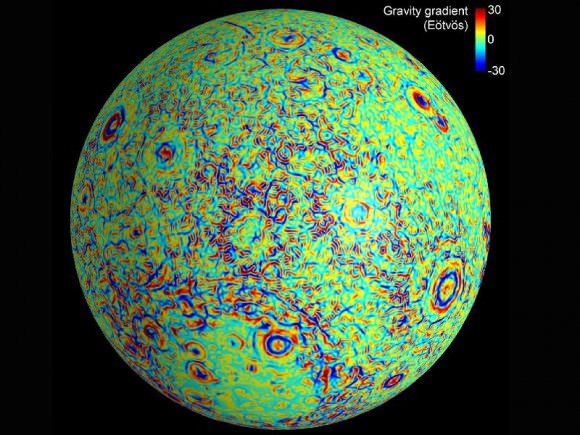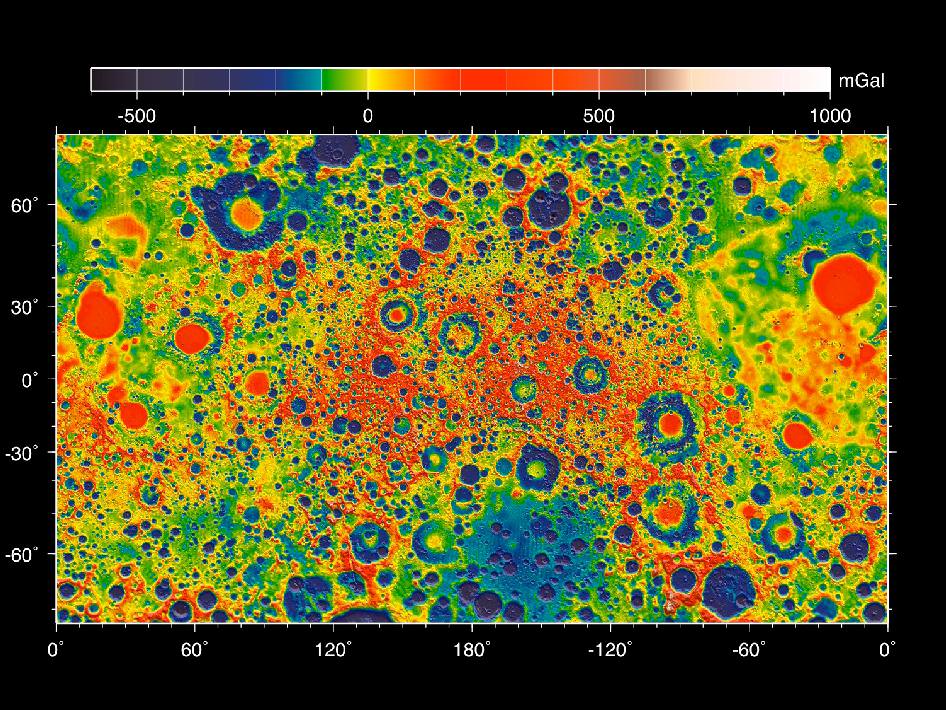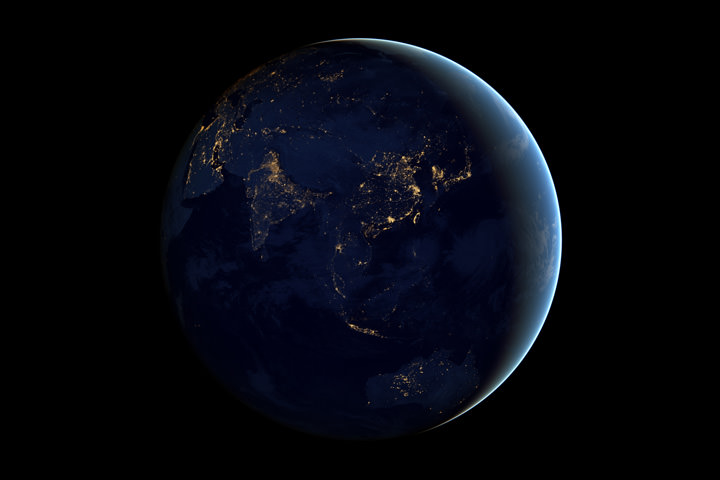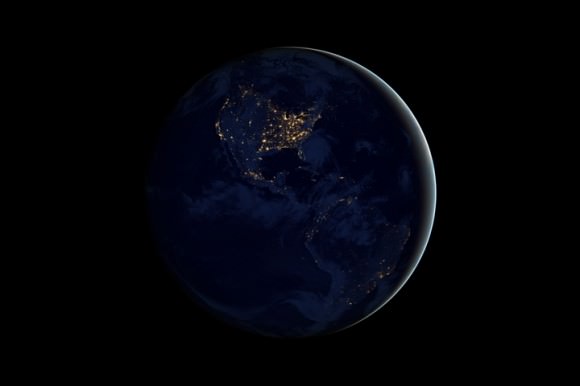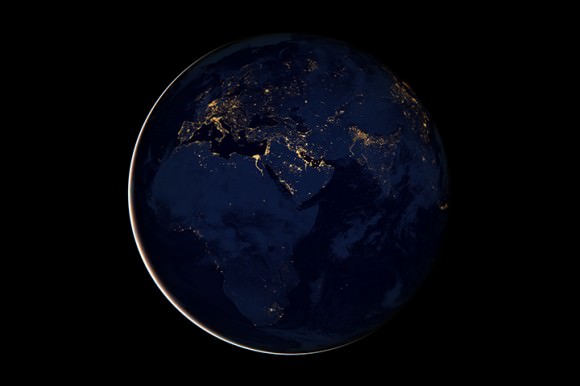This map shows the gravity field of the moon as measured by NASA’s GRAIL mission. Image credit: NASA/ARC/MIT
The first science results from NASA’s twin GRAIL lunar orbiters provide incredible detail of the Moon’s interior and the highest resolution gravity field map of any celestial body, including Earth.
The Gravity Recovery and Interior Laboratory (GRAIL) data shows ancient internal structures that were previously unknown, provides details that are up to five orders of magnitude better than previous studies of the Moon, and delivers unprecedented information about the Moon’s surface and gravity field.
The twin spacecraft, nicknamed Ebb and Flow, send radio signals to each other and any changes in distance between the two as they circle the Moon are measured, down to changes as small as 50 nanometers per second. “That’s 1/ 20,000th the velocity that a snail moves,” said Maria Zuber, GRAIL Principal Investigator, speaking at the American Geophysical Union conference today.
The new gravity maps reveals an abundance of features such as tectonic structures, volcanic landforms, basin rings, crater central peaks and numerous simple, bowl-shaped craters. Data also show the moon’s gravity field is unlike that of any terrestrial planet in our solar system.
The instruments on the GRAIL spacecraft can probe inside the planet. Incredible videos released today shows an abundance of detail that the team said they are only just beginning to study.
Subtracting away the gravity from surface features provides what is called a Bouguer gravity map. What remains is a view of mass anomalies inside the Moon due to either variations in crustal thickness or mantle density. In the video above, the prominent nearside circular highs (in red) indicate the well-known mass concentrations or ‘mascons,’ but many similar newfound far-side features are also visible.
“Ninety-eight percent of local gravity is associated with topography, while 2 percent are other gravitational features,” said Zuber. “You can see bull’s-eyes of the lunar mascons, but otherwise we see a smooth inner surface. The only way this could happen is if impacts to the early Moon shattered the inner surface.”
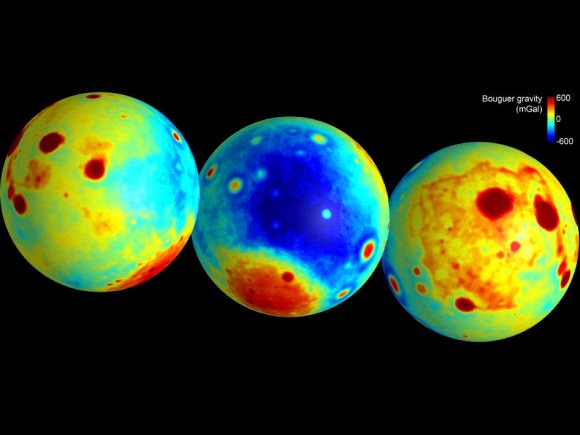
These maps of the moon show the “Bouguer” gravity anomalies as measured by NASA’s GRAIL mission. Image credit: NASA/JPL-Caltech/CSM
The Bougeur gravity map also revealed evidence for ancient volcanic activity under the surface of the Moon and strange linear gravitational anomalies.
“In the gradients of Bouguer gravity map, saw features we didn’t expect,” said Jeff Andrews-Hanna, GRAIL co-investigator. “We identified a large population of linear gravitational anomalies. We don’t see any expression of them on topography maps, so we infer that these are an ancient internal structures.”
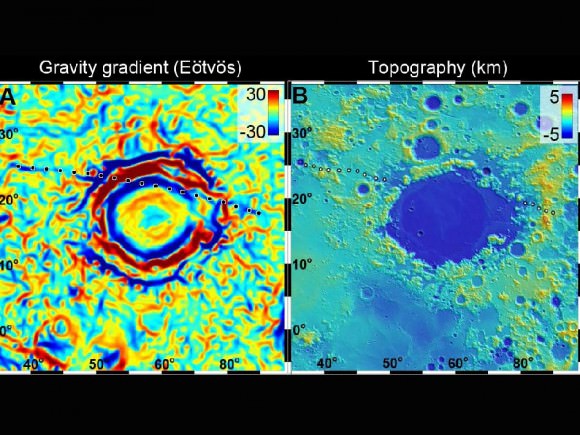
A linear gravity anomaly intersecting the Crisium basin on the nearside of the moon has been revealed by NASA’s GRAIL mission. The GRAIL gravity gradient data are shown at left, with the location of the anomaly indicated. Red and blue correspond to stronger gravity gradients. Topography data over the same region from NASA’s Lunar Reconnaissance Orbiter’s Lunar Orbiter Laser Altimeter are shown at right; these data show no sign of the gravity anomaly. Credit: NASA/JPL-Caltech/CSM
For example, this image of Crisium Basin, which forms one of the ‘man on moon’s’ eyes, the gravity maps shows a linear feature crossing the basin while topography maps show no such correlating feature. “This tells us the gravity anomaly formed before the impacts,” Andrews-Hanna said.
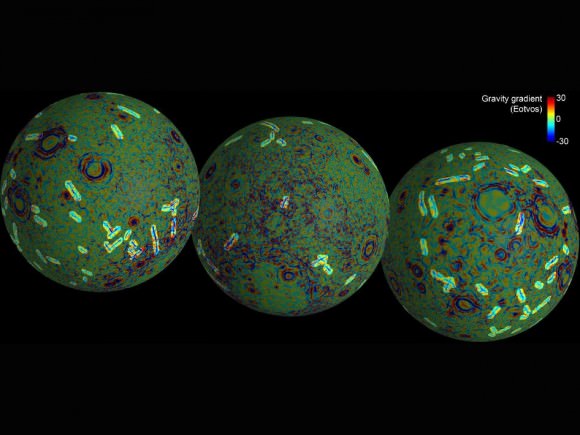
These maps of the near and far side of the moon show the gravity gradients as measured by NASA’s GRAIL mission, highlighting a population of linear gravity anomalies. Image credit: NASA/JPL-Caltech/CSM
Additional data reveal that the Moon’s inner crust in almost completely pulverized. Read more about it in our second article on the new GRAIL results.
Other data reveal the crust of the Moon is thinner than previously thought.
“Using GRAIL gravity data, we found the average thickness of the crust is 32-34 kilometers which is about 10 km less than previous studies,” said Mark Wieczorek, GRAIL Co-Investigator. “We found the bulk abundance of aluminum on Moon is nearly the same as that of the Earth. This is consistent with a recent hypothesis that the Moon is derived of materials from the Earth when it was formed during a giant impact event.”
NASA’s GRAIL mission took this flyover video above the Mare Orientale basin of Earth’s moon. It was collected by the MoonKAM aboard GRAIL’s Ebb spacecraft on April 7 and 8, 2012. Movie credit: NASA/JPL-Caltech/Sally Ride Science
During its prime mission, the two GRAIL spacecraft orbited just 55 km above the Moon’s surface. This close distance is why GRAIL is producing the best gravity field data for any planet, including Earth.
“GRACE is still collecting great data about Earth’s gravity field, but because Earth has an atmosphere, GRACE has to orbit at 500 km,” said Zuber. “Nothing beats going low.”
Zuber said the GRAIL team learned from GRACE and were able to make “some judicious improvements.” She also suggested this technology should be used for every planetary body in the solar system, and threw out an enticing idea: “Imagine mapping currents beneath the surface of Europa,” she said.
GRAIL finishes the primary science mission in May and are currently working in an extended mission where the spacrafts’ altitude was lowered to just 23 km above the surface. “We are opening another window interms of geophysics, and so you’ll be hearing results from the new data sets soon,” said Sami Asmar, GRAIL team member.
At a AGU conference session later in the day, Zuber revealed that tomorrow, December 6, 2012, the team will lower the GRAIL spacecraft down to just 11 km above the lunar surface.
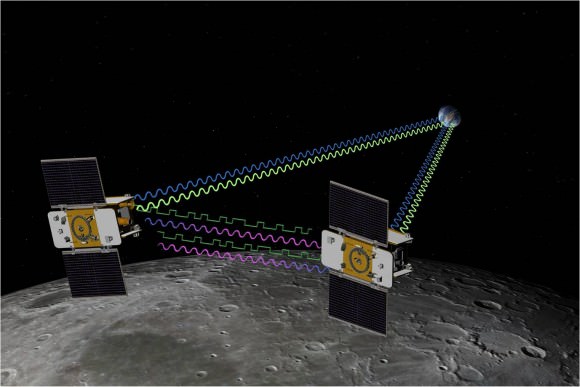
Artist concept of GRAIL mission, with two twin spacecraft in tandem orbits around the moon to measure its gravity field in unprecedented detail. Image credit: NASA/JPL
The extended mission will end soon, in mid-December, and soon after that, the two spacecraft will be crashed intentionally onto the lunar surface. The team said today that they are still formulating ideas for the impact scenario, and looking at the possibility of aiming the crashes so they are within the field-of-view of instruments on NASA’s Lunar Reconnaissance Orbiter.

